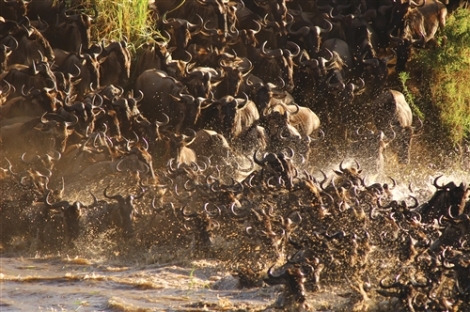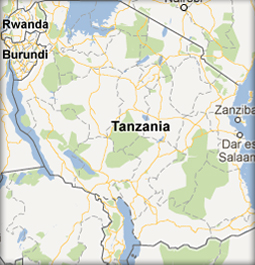
The Serengeti National Park is the largest and best known of all the Tanzania National Parks covering an area of 14,500 sq km (5,600 sq miles). Its northern boundary abuts the Maasai Mara National Reserve which is included in the Serengeti eco-system. Located to the north and west of Ngorongoro , the vast Serengeti plains sustain the greatest and most spectacular concentration of wildlife found anywhere in the world.
Most of the Serengeti is vast open plains with lofty rocky outcrops giving character to the landscape. There are also acacia and savannah woodland and scrub, forested and well-treed rivers, and the occasional swamp and small lake. The granite outcrops formed many millions of years ago and through the passage of time have become exposed and broken to form the rocky outcrops.
During February and March the vast herds of wildebeest and zebra gather to the south to give birth, it is estimated 400,000 wildebeest calves are born within a six week period. This mass birthing phenomenon takes place when water and fresh grazing is plentiful and helps to reduce infant mortality from predation. The animals then move north along the western corridor to the Maasai Mara to breed before moving south to start the whole pattern all over again.
The Serengeti is also known for its large prides of lions and the magnificent black maned lions are often seen surveying their territories from the top of the rocky outcrops. Leopards are relatively numerous and are to be found during the daytime resting in trees along the Seronera river.
Little creatures also play an important role in the plains life cycle. Banded mongoose, brightly coloured agama lizards, rock hyrax, dikdik, vervet monkeys to name just a few of the smaller animals all of which add to the wildlife spectacle of the Serengeti.
Large numbers of Kori Bustard, Africa’s heaviest flying birds, as well as the snake eating Secretary Bird, Crowned Plover, Yellow throated sandgrouse to name just a few of the many birds to be found on the plains.




